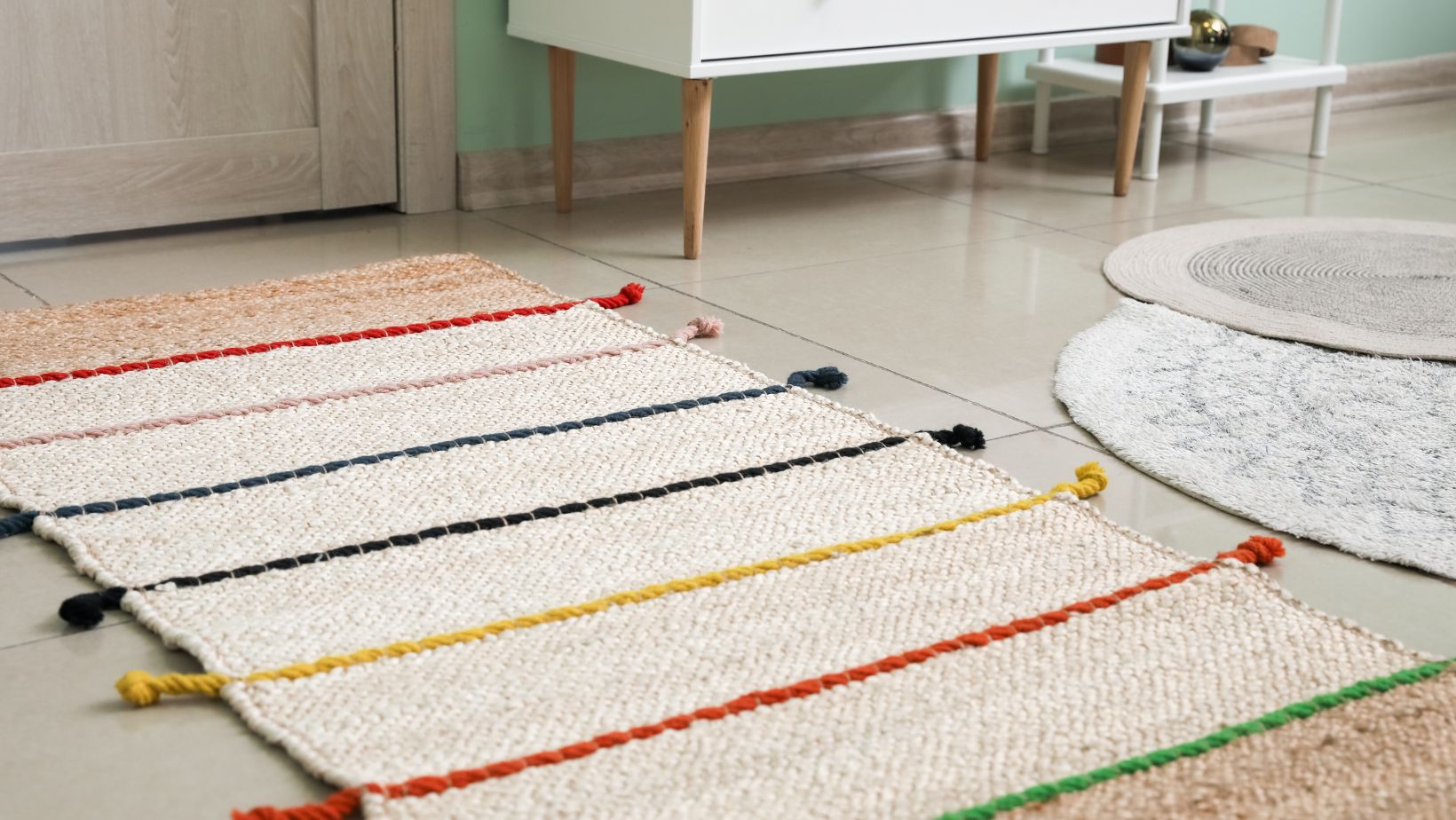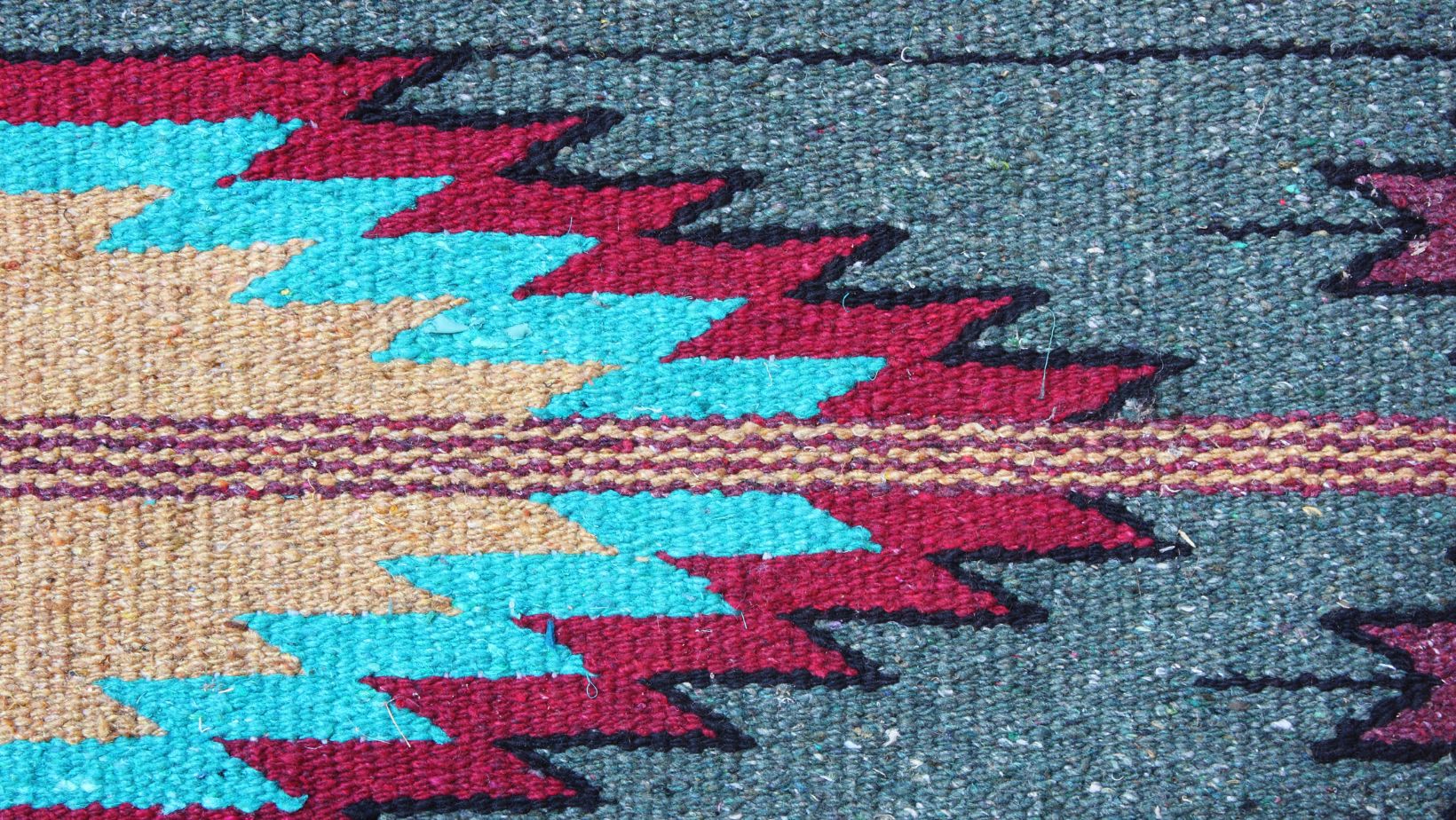Understanding Color Theory
Before diving into specific colors, it’s essential to grasp some basic color theory:
- Primary Colors: Red, blue, and yellow. These are the foundational colors from which others are derived.
- Secondary Colors: Green, orange, and purple, created by mixing primary colors.
- Tertiary Colors: Combinations of secondary and primary colors, like magenta and teal.
- Complementary Colors are colors that are opposite each other on the color wheel, like blue and orange. Using complementary colors can create vibrant and dynamic spaces.
- Analogous Colors: Colors next to each other on the color wheel, like blue and green. These combinations are harmonious and pleasing to the eye.
1. Sizing Your Rugs
Before choosing rug colors, it is also important to get the right size. The size of a rug significantly impacts the room’s overall look and feel.
- Living Room: Ensure your rug is large enough to fit under the front legs of your sofa and chairs, anchoring the seating area. A common size for living rooms is 8×10 or 9×12, while 5×7 rugs would be more appropriate for a smaller room in your home.
- Dining Room: The rug should extend at least 24 inches beyond the edges of the dining table so that chairs can sit comfortably on it, even when pulled out.
- Bedroom: Place a large rug under your bed, extending past the sides and foot of the bed. Alternatively, use smaller rugs on either side of the bed.
- Hallways and Entryways: Use runners to elongate narrow spaces and add warmth. Ensure the runner leaves a few inches of flooring visible on all sides.
2. Neutral Rug Colors
Characteristics: Neutral rugs include shades of white, beige, grey, and taupe. They are versatile and can blend seamlessly with various decor styles.
Styling Tips:
- Create a Calm Base: Use neutral rugs to provide a serene backdrop, allowing furniture and accessories to stand out.
- Layering: Layer neutral rugs with more colorful or patterned rugs to add depth and interest without overwhelming the space.
- Texture Play: In the absence of bold colors, focus on textures. A shaggy or woven neutral rug can add visual interest and comfort.
3. Bold and Bright Rug Colors
Characteristics: Bold rugs feature vibrant colors like red, blue, yellow, or green. These rugs can serve as statement pieces.
Styling Tips:
- Anchor the Room: Use a bold rug to ground your furniture arrangement, creating a cohesive look.
- Color Coordination: Match the rug with accents in the room, such as cushions, artwork, or curtains, to create a harmonious look.
- Contrasting Backdrop: In a room with neutral walls and furniture, a bright rug can inject life and prevent the space from feeling bland.
4. Patterned Rugs
Characteristics: Patterned rugs come in various designs, from traditional Persian motifs to modern geometric shapes.

Styling Tips:
- Balance with Simplicity: If you choose a rug with a complex pattern, balance it with simple, solid-colored furniture to avoid visual clutter.
- Echo Patterns: Use smaller patterns in cushions or throws that echo the rug’s design to create a cohesive theme.
- Mix and Match: Don’t be afraid to mix patterns, but ensure they share a common color palette to maintain harmony.
5. Monochromatic Rugs
Characteristics: Monochromatic rugs feature varying shades of a single color, creating a subtle yet sophisticated effect.
Styling Tips:
- Depth and Dimension: A monochromatic rug adds depth without overwhelming the space. This works well in minimalist and contemporary settings.
- Layer Shades: Complement the rug with furniture and decor in lighter or darker shades of the same color for a layered, cohesive look.
6. Cool-Colored Rugs
Characteristics: Cool colors like blue, green, and purple have a calming effect and can make a room feel more spacious.
Styling Tips:
- Serene Spaces: Use cool-colored rugs in bedrooms or living rooms to create a relaxing atmosphere.
- Natural Inspiration: Pair with natural elements like wood and plants to enhance the calming effect.
- Light and Airy: Combine cool-colored rugs with light furniture to create an airy and open feel.
7. Warm-Colored Rugs
Characteristics: Warm colors like red, orange, and yellow create a cozy and inviting atmosphere.
Styling Tips:

- Cozy Corners: Use warm-colored rugs in living areas and dining rooms to foster a sense of warmth and intimacy.
- Balance Heat: Balance the intensity of warm rugs with neutral or cool-toned furniture to prevent the space from feeling overwhelming.
- Highlight Features: Place warm-colored rugs in focal areas like under the dining table or in front of the sofa to draw attention.
8. Black and White Rugs
Characteristics: Black and white rugs are bold yet versatile, offering a striking contrast that can enhance various design styles.
Styling Tips:
- Modern Minimalism: Use black and white rugs in modern and minimalist interiors to add drama and definition.
- Timeless Appeal: Pair with classic furniture for a timeless look.
- Pattern Play: Opt for black and white patterns, such as stripes or chevrons, to add visual interest without introducing additional colors.
Conclusion
Styling with rug colors is a powerful way to influence the ambiance and aesthetics of your home. Whether you prefer the calm of neutrals, the vibrancy of bold hues, the complexity of patterns, or the timelessness of monochromes, choosing the right rug color can transform your space. By understanding color theory and considering the specific needs of each room, you can create a harmonious and visually appealing environment that reflects your style.





















